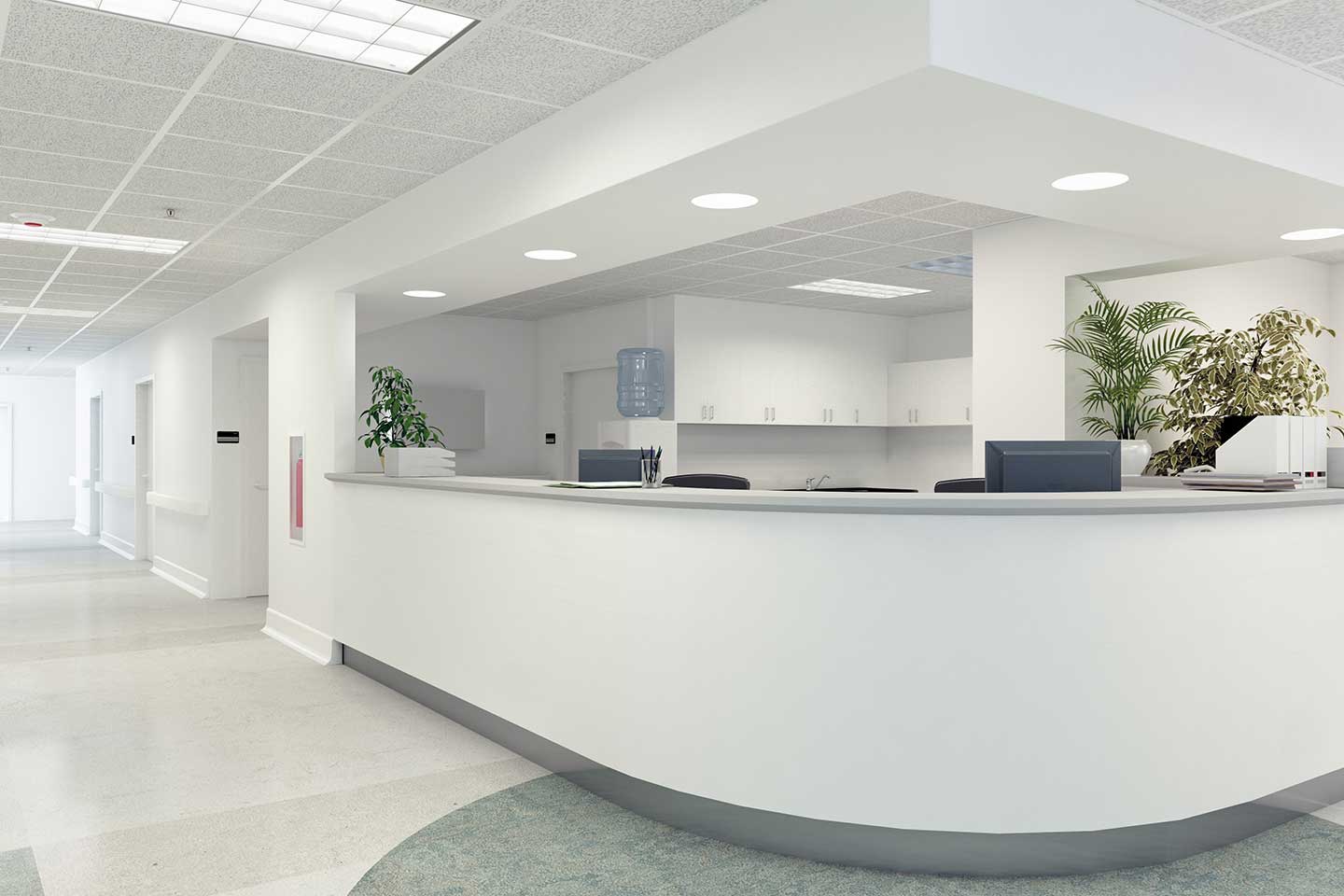For women in the US and Europe, the absolute risk of developing breast cancer is about 13%. In fact, 1 in 8 women will receive a breast cancer diagnosis in their lifetime. Yet, the individual likelihood of developing breast cancer varies from woman to woman. Research has discovered numerous risk factors – some of which can be influenced, while others can’t. Here’s an overview of the current state of research – and the consequences for early breast cancer detection.
Breast cancer risk: These influencing factors can’t be changed
By far, the most influential risk factor that can’t be changed is being female: Men make up less than 1% of all breast cancer cases. In women, the general risk of breast cancer increases primarily with age. Genetic and hormonal factors, along with previous exposure to radiotherapy, also play a role. Depending on the subtype of the breast carcinoma, these risk factors have a different weighting.
Age determines the chance of developing breast cancer
As with most cancers, the risk of developing breast cancer increases with age: while the 10-year risk of a breast cancer diagnosis for a 20-year-old woman is only 0.1%, for women aged between 70-79, this rises to 4%. After the age of 80, this drops slightly, which may be due to lower screening rates for this age group. The American Cancer Society cites that US women are diagnosed at a median age of 62.
Genetic factors can significantly increase breast cancer risk
It’s long been a fact that both breast and ovarian cancers run in families. Scientists are now increasingly aware of the causes and backgrounds to this. Currently, over 300 genetic factors have been identified and found to increase the breast cancer risk – some only moderately, while some increase the risk significantly. The best known of these are mutations in the tumor suppressor genes BRCA-1 and BRCA-2. Up to 70% of all women with mutations in the BRCA-1/2 genes develop breast cancer during their lives. There are other, rarer high-risk genes, such as CDH1, TP53, PTEN, or PALB2. In addition, certain genetic variations are known to slightly or moderately increase breast cancer risk.
Dense breast tissue increases breast cancer risk
Breast cancer predominantly develops within mammary gland tissue. Women with high breast density – a high proportion of mammographically dense breast tissue – are therefore more likely to develop breast cancer. Studies have indicated that the breast cancer risk can increase by anywhere between a factor of 2 to 4. However, it’s crucial to be aware here that dense breast tissue also makes it more difficult to detect breast cancer and its precursors in the first place, particularly via conventional mammograms.
Links between hormonal factors and hormone receptor-positive breast carcinoma
Countless studies have shown that the number of menstrual periods a woman has in her lifetime affects her breast cancer risk. Thus, both early puberty and late menopause, as well as fewer pregnancies, can increase the risk of developing breast cancer, particularly hormone receptor-positive breast carcinoma. Here, the decisive factor is a woman’s hormone levels over her lifetime. In postmenopausal women, higher levels of endogenous sex hormones may be linked to an increased breast cancer risk. However, these elevated hormone levels could partly be down to other potentially modifiable risk factors, such as obesity or alcohol consumption.
Previous experiences of radio- and chemotherapies
Since ionizing radiation has a potentially mutagenic effect, irradiation during childhood, adolescence or early adulthood can increase the breast cancer risk – especially if this has been focused on the chest. For example, this impacts women who have received treatment for Hodgkin’s lymphoma in their youth.
The extent to which breast cancer risk increases depends on several factors: the irradiation technique, the exact location of the irradiated area, the cumulative radiation dose, and the exact time of treatment. The risk grows especially high in cases of irradiation while breast tissue is still developing.
Women who undergo treatment for leukemia or sarcoma in their youth have a higher risk of breast cancer. Chemotherapy also increases this risk, not just radiotherapy.
Lifestyle and breast cancer risk: potentially modifiable risk factors
In addition to these fixed factors, a woman’s personal lifestyle also plays a role in breast cancer risk. There is firm evidence that factors such as hormone therapies, obesity, alcohol and nicotine use, and lack of exercise can increase breast cancer risk. The data is still unclear for other factors, such as environmental pollutants, shift work or socioeconomic status.
Contraceptives and hormone therapies: Weighing up the benefits and risks with your GP
Numerous studies have shown that hormonal contraceptives increase the risk of breast cancer by as much as 20% – especially if taken before a woman’s first pregnancy. However, since the absolute risk of disease is very low in young women, only a few cases of breast cancer can be attributed to the “pill”. Once a woman stops taking hormonal contraceptives, her risk decreases once more and returns to the age-related average after a maximum of 10 years.
In recent decades, there has been much discussion about the influence of hormone replacement therapies (HRT) intended to alleviate postmenopausal symptoms. Several meta-analyses have found that estrogen-progestin products are especially likely to increase the development of estrogen receptor-positive breast cancer. Since the publication of these results, their prescription rate has significantly declined. More recent studies have confirmed the link but show the importance of a wider context: the timing and duration of the HRT and the type of preparation are also vital. Short-term use of low-dose combination preparations for targeted treatment of menopausal symptoms only shows a moderate increase in breast cancer risk. Whatever the case, GPs should carefully weigh the risks and benefits when recommending treatment.
Obesity indirectly leads to cancer development
After menopause, female adipose tissue becomes the main site for estrogen production. Thus, obesity indirectly influences hormone levels, in turn affecting breast cancer risk. This is especially the case after menopause, as a body mass index of ≥ 25 increases the risk of developing hormone-dependent breast cancer. In younger women, the link is less clear. It’s possible that elevated insulin levels may also be involved in the development of cancer for overweight women.
Lack of exercise can also increase breast cancer risk
It’s been well documented that regular physical activity can have a protective effect, regardless of body mass index (BMI). Women who do at least 3 to 5 hours of moderate exercise per week can reduce their risk of breast cancer by 10-20%. The reasons for this are unclear, yet exercise may improve hormone levels, inflammatory processes and immunological factors.
Alcohol consumption: A tenuous link
Studies cite that alcohol consumption can increase breast cancer risk by 7-10 % for every 0.4 oz of alcohol consumed daily – that’s equivalent to one alcoholic drink. There is still some uncertainty about the causal relationship. Most likely, alcohol consumption affects endogenous estrogen levels. However, alcohol and its breakdown products may also have a direct carcinogenic effect.
Smoking has a clear link to breast cancer risk
Cigarette smoke contains numerous carcinogenic substances that are known to increase the general risk of cancer. This link has also been clearly proven for breast cancer risk. Here, the impact depends on the dose, and it rises with the number of cigarettes smoked, and the years of smoking. Some studies suggest that passive smoking is also a risk factor, especially for women who were exposed to smoke during childhood and adolescence.
How do we deal with individual breast cancer risk?
Currently, it’s still very difficult to take individual risk constellations into account for early detection. National breast cancer screening programs are primarily based on a woman’s age, disregarding other risk factors. As a result, these programs often fail to meet individual needs: some women may be screened too frequently, while others may not have timely access to screening.
Screening programs that take individual breast cancer risk into account could increase the benefit for each woman. There are currently research programs underway in many countries, such as the US, the Netherlands, and Spain, aiming to address risk-based screening strategies. This raises many questions, such as:
- Which predictive models are suitable for determining individual breast cancer risk?
- How can women be adequately informed about their personal risk?
- What thresholds should be used to define risk groups?
- How can risk-based screening programs be successfully implemented on a wider scale?
As of yet, too many factors remain unclear when it comes to implementing risk-adapted screening strategies on a larger scale. However, physicians can educate women on a case-by-case basis about their breast cancer risk, recommending government screening programs for them, and advise them on further relevant screening measures.
Breast cancer screening 2.0 – with technological support
These days, even having an individually high risk of developing breast cancer won’t significantly limit a woman’s life expectancy. This is because closely synched early detection measures make it possible to detect breast cancer at very early stages, when there’s still a good chance of recovery. Traditional digital mammograms play a key role here, but this method is increasingly being supplemented by modern techniques such as tomosynthesis or breast MRIs.
In the future, support systems based on artificial intelligence (AI) offer a huge potential to make early breast cancer detection safer and more efficient. Self-learning software can detect malignant changes on mammogram images with high precision, making it easier for radiologists to evaluate vast amounts of data quickly and accurately. AI tools are also already being used as a risk assessment tool in experimental settings. Overall, these advances will significantly help health providers examine women in a more targeted manner, thereby increasing the individual benefits of screening programs.
Patients need comprehensive information about their personal breast cancer risk
In clinical settings, there’s currently an emphasis on physicians being well-informed about current data on breast cancer risks, so they can provide women with individually informed advice. This is particularly important when there’s evidence of positive family histories; here, testing for known genetic mutations can be useful. However, it’s crucial that other risk factors – especially life-style related ones – are taken into account during screenings. It’s only when women are given all the information that they can make informed decisions on their personal health care.






